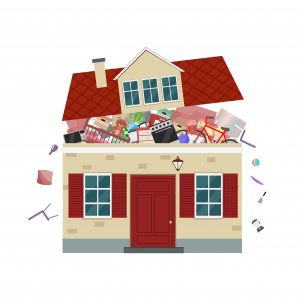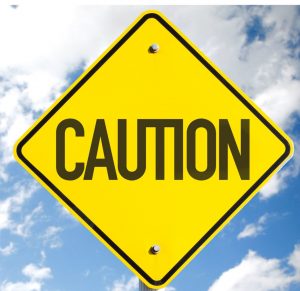 Some people joke about hoarders, but those people haven’t lived with the pain, frustration, and very real physical dangers caused by this mental illness.
Some people joke about hoarders, but those people haven’t lived with the pain, frustration, and very real physical dangers caused by this mental illness.
While hoarding usually presents when a person is still a child, it is a disorder that—like dementia—becomes more prevalent and severe with age. It is an illness that is very difficult to treat, and one that affects not only the hoarder, but everyone around them.
Sadly, like many other mental illnesses, hoarding is often very misunderstood and even maligned. People wrongly assume that hoarding is simply a matter of someone collecting too many things or being too lazy to keep their home tidy.
The Mayo Clinic defines hoarding disorder as, “a persistent difficulty discarding or parting with possessions because of a perceived need to save them. A person with a hoarding disorder experiences distress at the thought of getting rid of the items. Excessive accumulation of items, regardless of actual value, occurs.”
The concept of hoarding is so morbidly fascinating that a television series launched in 2009 has been running for ten seasons exploring the lives of people suffering with this condition. But “fascinating” is not a word the children of hoarders would use to describe the real-life experience.
The Real-life Dangers of Hoarding
There are many practical concerns and physical dangers associated with hoarding.
-
- Also, having so many things crammed into a space increases the possibility of falls caused by tripping.
-
- In addition, the homes of hoarders often become so unmanageable that they pose a very real health risk to the owners and even nearby neighbors in terms of pests and generally unsanitary conditions.
It is a terrifying and heartbreaking thing to witness a loved one being, as the television series’ subtitle puts it, “buried alive” in an overwhelming collection of what is usually—by normal standards—junk.
It is also an emotionally painful experience to endure. Maybe even more harmful than the physical dangers is the damage hoarding can do to the relationships between afflicted parents and their children. Though they are only trying to help, children of hoarders can easily cause more trauma instead of making things better.
Challenges of Treating Hoarding Disorder
Because hoarding is so difficult to understand, people often make mistakes when trying to treat it. Well-meaning children and others may try to “take care of the problem” using threats, demands, bribery, or outright force (such as sending the hoarder away for a few days, and cleaning out their home without their permission or involvement).
 The problem with these approaches is that hoarders don’t see their dysfunction. They believe that their behavior is rational and even expect their thrift to be admired. Using brute tactics leaves them feeling violated, betrayed, resentful, and often angry. Hoarders acquire items because they think they have value or may be useful later. Their attachment to their belongings is fierce.
The problem with these approaches is that hoarders don’t see their dysfunction. They believe that their behavior is rational and even expect their thrift to be admired. Using brute tactics leaves them feeling violated, betrayed, resentful, and often angry. Hoarders acquire items because they think they have value or may be useful later. Their attachment to their belongings is fierce.
Helping a parent with a hoarding disorder is a challenging task that will likely require the support of professionals.
There are a few things to keep in mind as you prepare to address the issue:
-
- Take care of yourself first. Helping someone come to terms with any mental illness is something that requires intense commitment, extreme patience, and deep empathy. This is an exhausting and frustrating endeavor. To be able to offer help, you must ensure that you give yourself permission to do what you need to do to rest, replenish yourself, and generally feel strong and healthy.
-
- Have the hoarder see their doctor. Hoarding is a medical condition that can be connected to other physical or mental health issues such as dementia. To help you understand the complete picture, it’s a good idea to have a primary care doctor do a comprehensive evaluation.
-
- Consider therapy and possibly medication. In some cases, working with a therapist (sometimes combined with medicinal support) can help to mitigate the severity of the illness and create an opening for additional measures.
-
- Take it slow. Hoarding is not a problem that can be solved overnight. You need to be very patient and compassionate. Take small steps, and celebrate every victory, even if it’s just getting the hoarder to agree to part with a single item.
-
- Seek outside support. In addition to doctors and therapists, there are other people who can provide insight, experience, and hands-on help in dealing with a hoarding situation. The Children of Hoarders (COH) group maintains a website that contains a wealth of information, including a list of Connecticut-based resources.
And perhaps most importantly, know that you are not alone in this struggle, and it’s not your fault. Hoarding is a mental illness, not a personal failure. And there are ways to help your loved one.
Related Posts:
Downsizing: 6 Easy Steps to Success
7 Ways to Unload Your Family Heirlooms
Keep or Toss: Keeping Your Records Straight Pays Off
 Connecticut Estate Planning Attorneys Blog
Connecticut Estate Planning Attorneys Blog



